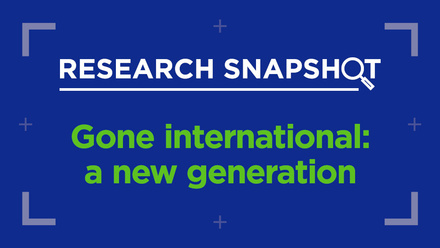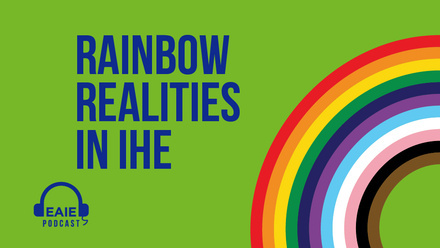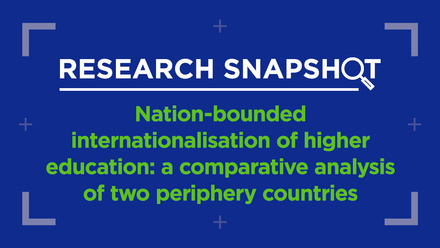Building purposeful partnerships for inclusion

Author Jude Carroll is surely right when she claims that "diversity can be a resource that enriches all students’ learning if teachers are able to create an inclusive learning environment". Yet how do we go about including international students in and outside the classroom?
It is one thing to attract growing numbers of international students to a university, and quite another to make sure these students are properly included in activities across the university, in both the formal and the informal curriculum. At the University of Groningen (UG) we are building experience in developing inclusive international programmes, and at the heart of this process is the need to build purposeful partnerships between the various stakeholders in the complex environment of a 21st-century university.
Designing purposeful interaction
Our approach at UG has been to draw on existing principles for good practice for redesigning programmes to incorporate an international dimension. We aim to align a policy of building inclusive international classrooms with actual practices, building lasting partnerships as we go. We work with stakeholders across the university to translate these principles into appropriate activity.
In order to be meaningful, interaction has to be purposeful.
An example of such a principle is the need to foster interaction and dialogue, which will be implemented in different ways in different disciplines, promoting a culture of knowledge exchange both within the university and in the student’s future profession. In line with the principle of fostering interaction and dialogue, we promote the idea that, in order to be meaningful, interaction has to be purposeful.
What this means in the classroom, firstly, is the need to design interaction between students so that an exchange of knowledge and cultures can take place. Only through interaction are the differences and richness in knowledge and cultures made transparent both to the students and their lecturers. This is not usually the case, for instance, in a traditional lecture, although the information acquired during a traditional lecture may provide the foundation for the interaction.
Secondly, it is necessary to design the interaction so that it makes sense and is appropriate in the context of the discipline, programme or course. The interaction should therefore activate knowledge and produce learning that is clearly related to the learning outcomes and/or to the future profession. Interactions are usually not purposeful if their practical value is not recognisable to students in the context of their studies or future profession, leading to the question “why do we have to do this?” This often results in a reduction in motivation and a failure to produce learning. Interactions are also not purposeful if they fail to produce assessable evidence of that learning, eg a poster, a presentation, a report (whatever is most appropriate to the studies).
In this post, I will extend this principle of ‘purposefulness’ from the classroom to other interactions and partnerships between stakeholders across the university.
Examples of good practice supported by the faculty
Increasing diversity in the student and staff bodies can be a catalyst for more explicit approaches to inclusion across the university, but initiatives are only likely to have long-term impact when supported in a structural way by the faculty and programme management.
For example, in the Bachelor’s in Psychology programme at UG, intercultural exchanges between Dutch and international students are now being designed explicitly within the curriculum, bringing together students studying through Dutch and students studying through English. Meanwhile, inclusion is being addressed outside the classroom through the ‘buddying’ of younger students with older students. This buddying system is the result of a partnership between the faculty and students, guided by a Diversity and Inclusion advisor, whose presence indicates the programme management’s desire to promote inclusion.
Another example can be found at the Bachelor’s in International & European Law, where the faculty has supported a pilot project involving teamwork between educational developers with complementary expertise in the international classroom, intercultural competences and small-group pedagogy. These experts have worked closely with the core teaching team to create an explicit focus in the programme on dealing with diversity and intercultural awareness during group work. This ensures that students focus on roles in teamwork, which is consistent with the need for students to work in teams in their future profession.
Embedding inclusion throughout the HEI
Examples like these can be used to inspire colleagues in other programmes to take similar steps. Lecturers and students can work in partnership to present these best practices to their peers, providing authentic first-hand experience. The challenge is to develop an inclusive learning environment by taking the many good initiatives we already find and embedding them more consistently across the institution. This requires support from policymakers, and UG has initiated several institution-wide projects to support these processes, including the International Classroom project, started in 2013, which is working on the development of ‘international classrooms’ across the university. To be effective, such projects need to be resourced in such a way that those responsible for implementing good practices in programmes are provided with real time, which means real budget.
We aim to align a policy of building inclusive international classrooms with actual practices, building lasting partnerships as we go.
Betty Leask, in Internationalizing the Curriculum, emphasizes the need for institutions to invest in an ‘imagine stage’ in the continual improvement of curricula (in addition to the regular PDCA cycle). This provides educational developers, lecturers and students with the chance to step outside of their daily busyness and to figure out what internationalisation means to them. We have also found that involvement in European partnerships such as IntlUni and EQUiiP helps us to create spaces for this kind of reflection while also providing us with a broader perspective on issues such as the professional development of lecturers in the context of internationalisation.
Building purposeful partnerships
To conclude, in order to engage in building an inclusive international learning environment, we need to create a culture of mutual trust and respect through activity with diverse partners. We often find that apparently simple actions can benefit all parties; for example, we help all students by being more explicit about the way the curriculum works, explaining how a lecture or a tutorial works, or being explicit about assessment methods.
Only through interaction are the differences and richness in knowledge and cultures made transparent both to the students and their lecturers.
There is so much that is implicit about how a university works, and we need to remember that Dutch Bachelor’s students have never been to university before either! Only, the Dutch students are more likely than the international students to have access to informal and hidden exchanges of information on the workings of the university. Later on, our students will either work abroad, or they will work in an increasingly diverse society in the Netherlands. Inclusion at university can nurture future inclusion in society, but truly inclusive higher education will not develop by accident – it needs to be built purposefully.
Suggested further reading:
Carroll, J. (2015). Tools for teaching in an educationally mobile world. Abingdon, UK: Routledge.
Haines, K. (2017). Purposeful interaction and the professional development of content teachers: Observations of small-group teaching and learning in the international classroom. In Valcke, J. & Wilkinson, R. (eds.) Integrating Content and Language in Higher Education: Perspectives on Professional Practice. Frankfurt am Main: Peter Lang, p. 39-58.
Leask, B. (2015). Internationalizing the curriculum. Abingdon, UK: Routledge.






